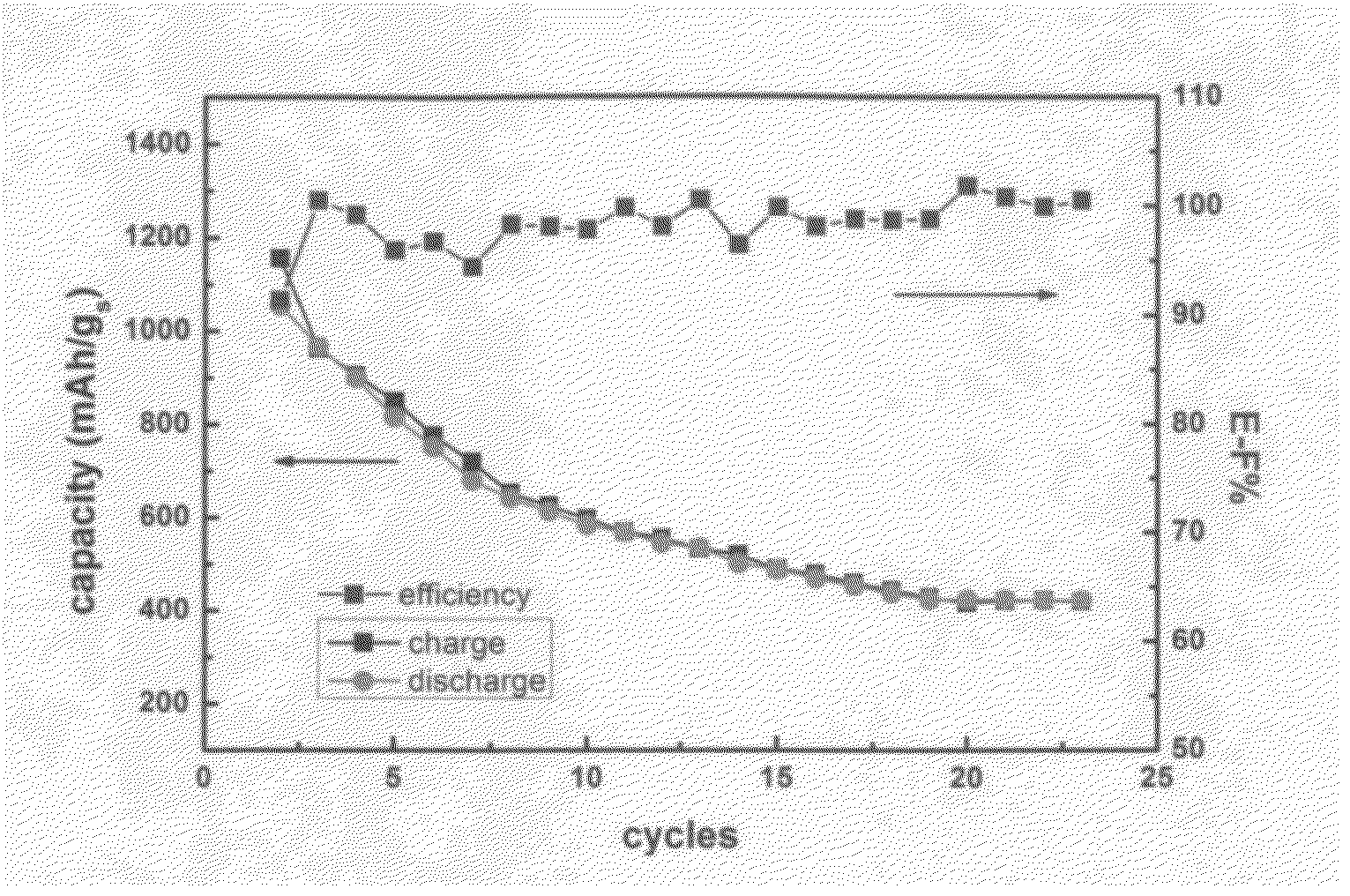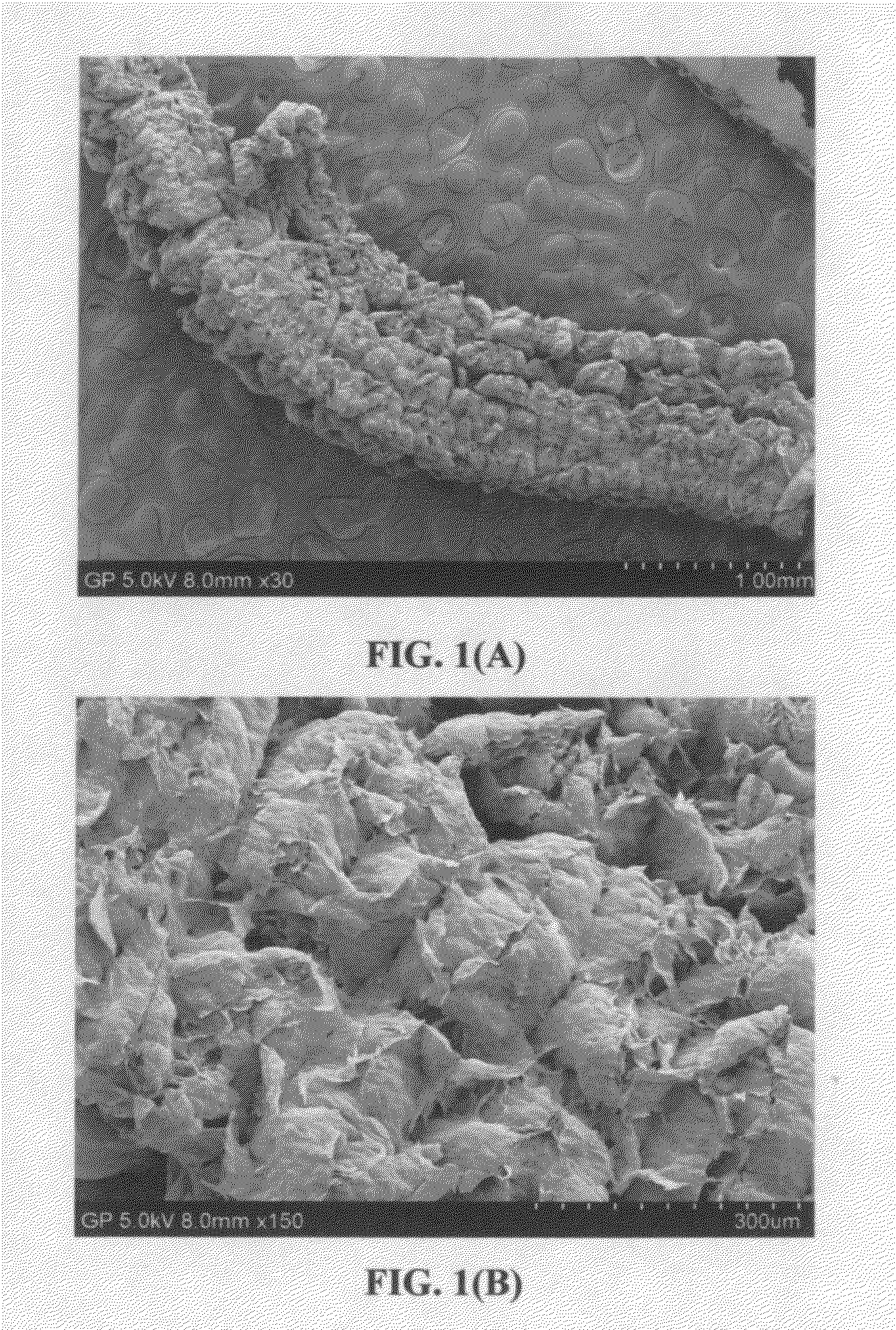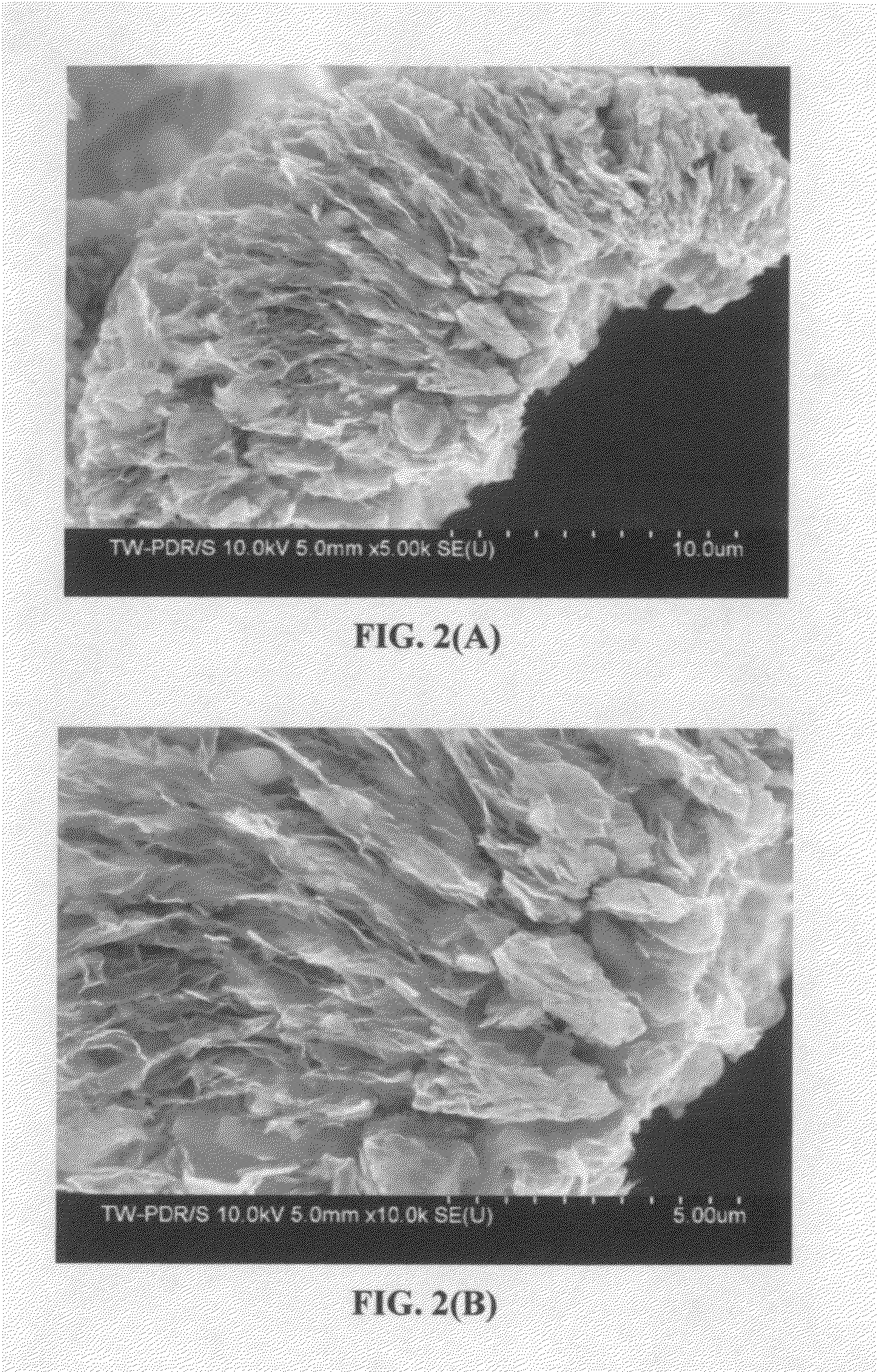Lithium secondary batteries containing lithium salt-ionic liquid solvent electrolyte
a lithium salt and lithium salt technology, applied in secondary cells, battery servicing/maintenance, cell components, etc., can solve the problems of less suitable for lithium ion diffusion, relatively high viscosity of liquid, and less suitable for lithium metal dendrite and achieve low electric and ionic conductivity, simple and cost-effective approach to prevent potential li metal dendrite internal short circuit and thermal runaway problems
- Summary
- Abstract
- Description
- Claims
- Application Information
AI Technical Summary
Benefits of technology
Problems solved by technology
Method used
Image
Examples
example 1
Some Examples of Electrolytes Used
[0118]A wide range of lithium salts can be used as the lithium salt dissolved in an ionic liquid solvent (alone or as a mixture with another ionic liquid or a solubility-promoting liquid). The following are good choices for lithium salts that tend to be dissolved well in selected ionic liquid solvents: lithium borofluoride (LiBF4), lithium trifluoro-metasulfonate (LiCF3SO3), lithium bis-trifluoromethyl sulfonylimide (LiN(CF3SO2)2 or LITFSI), lithium bis(oxalato)borate (LiBOB), lithium oxalyldifluoroborate (LiBF2C2O4), and lithium bisperfluoroethy-sulfonylimide (LiBETI). A good electrolyte additive for helping to stabilize Li metal is LiNO3.
[0119]Preferred ionic liquid solvents may be selected from a room temperature ionic liquid (RTIL) having a cation selected from tetraalkylammonium, di-alkylimidazolium, alkylpyridinium, dialkyl-pyrrolidinium, or dialkylpiperidinium. The counter anion is preferably selected from BF4−, B(CN)4−, CF3CO2−, CF3SO3−, N(S...
example 2
Exfoliated Graphite Worms from Natural Graphite Using Hummers Method
[0121]Graphite intercalation compound (GIC) was prepared by intercalation and oxidation of natural graphite flakes (original size of 200 mesh, from Huadong Graphite Co., Pingdu, China, milled to approximately 15 μm) with sulfuric acid, sodium nitrate, and potassium permanganate according to the method of Hummers [U.S. Pat. No. 2,798,878, Jul. 9, 1957]. In this example, for every 1 gram of graphite, we used a mixture of 22 ml of concentrated sulfuric acid, 2.8 grams of potassium permanganate, and 0.5 grams of sodium nitrate. The graphite flakes were immersed in the mixture solution and the reaction time was approximately three hours at 30° C. It is important to caution that potassium permanganate should be gradually added to sulfuric acid in a well-controlled manner to avoid overheat and other safety issues. Upon completion of the reaction, the mixture was poured into deionized water and filtered. The sample was then...
example 3
Conductive Web of Filaments from Electro-spun PAA Fibrils for Anode
[0122]Poly (amic acid) (PAA) precursors for spinning were prepared by copolymerizing of pyromellitic dianhydride (Aldrich) and 4,4′-oxydianiline (Aldrich) in a mixed solvent of tetrahydrofurane / methanol (THF / MeOH, 8 / 2by weight). The PAA solution was spun into fiber web using an electrostatic spinning apparatus. The apparatus consisted of a 15 kV d.c. power supply equipped with the positively charged capillary from which the polymer solution was extruded, and a negatively charged drum for collecting the fibers. Solvent removal and imidization from PAA were performed concurrently by stepwise heat treatments under air flow at 40° C. for 12 h, 100° C. for 1 h, 250° C. for 2 h, and 350° C. for 1 h. The thermally cured polyimide (PI) web samples were carbonized at 1,000° C. to obtain a sample with an average fibril diameter of 67 nm. Such a web can be used to accommodate sulfur (or lithium polysulfide), vanadium oxide, tit...
PUM
| Property | Measurement | Unit |
|---|---|---|
| size | aaaaa | aaaaa |
| size | aaaaa | aaaaa |
| specific energy | aaaaa | aaaaa |
Abstract
Description
Claims
Application Information
 Login to View More
Login to View More - R&D
- Intellectual Property
- Life Sciences
- Materials
- Tech Scout
- Unparalleled Data Quality
- Higher Quality Content
- 60% Fewer Hallucinations
Browse by: Latest US Patents, China's latest patents, Technical Efficacy Thesaurus, Application Domain, Technology Topic, Popular Technical Reports.
© 2025 PatSnap. All rights reserved.Legal|Privacy policy|Modern Slavery Act Transparency Statement|Sitemap|About US| Contact US: help@patsnap.com



